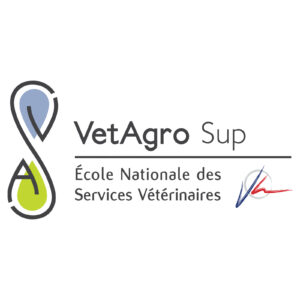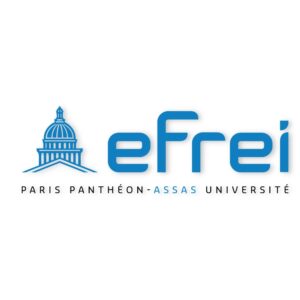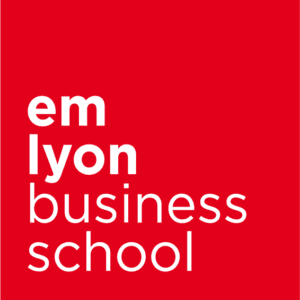Cette activité permet aux étudiants de créer, présenter et recevoir des feedbacks sur des présentations ou des posters scientifiques. Les évaluations peuvent être faites par les pairs, les enseignants ou des experts externes, offrant ainsi une perspective variée sur le travail présenté.
💡 Sélectionnez le modèle dans ChallengeMe pour lancer cette activité en un clic !
L’objectif principal est de développer les compétences des étudiants en communication scientifique, en synthèse de l‘information et en présentation visuelle, tout en leur permettant de recevoir des retours constructifs pour améliorer leur travail.
Développement de compétences en communication – Les étudiants apprennent à synthétiser et présenter efficacement leur recherche.
Amélioration des compétences visuelles – La création de posters ou de diapositives développe les capacités de design et de mise en page.
Renforcement de l’esprit critique – L’évaluation des travaux des pairs affine les compétences d’analyse.
Préparation aux conférences académiques – Cette activité simule l’expérience de présentation dans des contextes professionnels.
Feedback multidimensionnel – Les étudiants reçoivent des retours de diverses sources, enrichissant leur perspective.
Développement de la confiance – La présentation de leur travail renforce la confiance des étudiants en leurs capacités de recherche et de communication.
💡 Sélectionnez la collection de critères associé à ce cas d’usage dans la plateforme
Les étudiants ou groupes déposent leurs travaux sur la plateforme en suivant les consignes définies par l’enseignant.
Les étudiants et/ou enseignants évaluent les travaux en utilisant les critères d’évaluation définis par l’enseignant.
Ils peuvent également donner leurs feedbacks.
Les étudiants découvrent les évaluations et feedbacks reçus en fonction des options d’affichages définies.
Choisissez la méthode d’évaluation qui vous convient le plus.
Vous pouvez utiliser une activité « simple » ou ajouter des phases de dépôts ou d’évaluation supplémentaires.
Pourquoi ne pas utiliser notre assistant IA pour guider les étudiants dans leur feedback. L’assistant peut leur donner des éléments pour améliorer leur feedback et le rendre plus constructif.
⬜ Fournir des exemples – Montrez des exemples de présentations ou de posters réussis pour guider les étudiants.
⬜ Organiser des ateliers – Proposez des sessions sur la création de posters efficaces ou la réalisation de présentations impactantes.
⬜ Établir des critères clairs – Définissez et communiquez des critères d’évaluation précis pour guider la création et l’évaluation.
⬜ Encourager l’interaction – Pour les présentations de posters, incitez les étudiants à préparer une courte présentation orale et à anticiper les questions.
⬜ Utiliser des grilles d’évaluation – Fournissez des rubriques détaillées pour structurer le feedback des évaluateurs.
⬜ Promouvoir l’auto-évaluation – Demandez aux étudiants d’évaluer leur propre travail avant de recevoir le feedback externe.
⬜ Faciliter les échanges – Organisez des sessions de questions-réponses après les présentations pour approfondir la discussion.
⬜ Valoriser l’amélioration – Offrez la possibilité de réviser et de resoumettre le travail après avoir reçu le feedback initial.









ChallengeMe propose des critères d’évaluation clairs et précis que vous pouvez personnaliser. En outre, l’anonymat des évaluations et la possibilité d’avoir plusieurs évaluateurs par travail aident à garantir l’équité.
Nous recommandons également de préparer les étudiants, de leur expliquer les objectifs, voir de coconstruire avec eux la grille critériée en prenant exemples sur d’anciens travaux.
Absolument, le travail de groupe est possible, aussi bien en phase de réponses (dépôt d’un fichier en groupe par exemple) que en phase d’évaluation (les étudiants doivent se mettre d’accord sur le feedback et les évaluations)
Nous avons plusieurs contenus disponibles. Dans la plateforme, les étudiants sont accompagnés sur l’activité avec des conseils pour donner des feedback pertinents. Nous mettons aussi à disposition des enseignants des documents qu’ils peuvent utiliser pour présenter l’activité aux étudiants.
Vous choisissez ! Vous pouvez mettre en place du formatif uniquement (pas de notes, uniquement des feedback) ou bien construire une note avec de la pondération sur les critères, des bonus/malus selon certains événements (retard par exemple) ou encore pondérer la note de l’évaluation par les pairs avec celle de l’enseignant.
Nous travaillons avec + de 90 écoles en France, Suisse, Belgique et au Québec. Vous trouverez sur notre site plusieurs retours d’expériences d’autres écoles sur nos activités.






Nous vous proposons d’essayer gratuitement ChallengeMe. N’hésitez pas à nous contacter directement pour toutes vos questions, notre équipe sera ravie de vous aider !